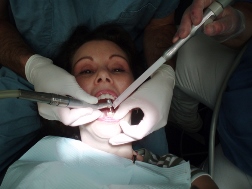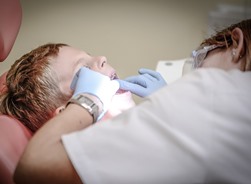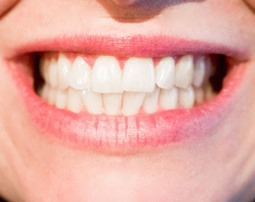How to Pick a Dental Hygienist College near Milford Iowa
 Choosing the ideal dental hygienist program near Milford IA is an important initial step toward starting your new career in dentistry. But before you can make your choice, you must examine and compare your school options. There is much more to doing your due diligence than choosing the college with the most affordable tuition or enrolling in the program that is nearest to your home. There are other important factors to take into account also, such as the college’s accreditation and reputation. Dental hygienists usually earn an Associate Degree, as compared to a certificate usually earned by assistants, and can take anywhere from 2 to 3 years to finish. Naturally with the lengthier training of a hygienist comes more cost. We will talk about all of these factors and additional questions that you should be asking the dental hygienist schools you are assessing later in this article. But first, let’s review the roles of dental hygienists and the training programs available.
Choosing the ideal dental hygienist program near Milford IA is an important initial step toward starting your new career in dentistry. But before you can make your choice, you must examine and compare your school options. There is much more to doing your due diligence than choosing the college with the most affordable tuition or enrolling in the program that is nearest to your home. There are other important factors to take into account also, such as the college’s accreditation and reputation. Dental hygienists usually earn an Associate Degree, as compared to a certificate usually earned by assistants, and can take anywhere from 2 to 3 years to finish. Naturally with the lengthier training of a hygienist comes more cost. We will talk about all of these factors and additional questions that you should be asking the dental hygienist schools you are assessing later in this article. But first, let’s review the roles of dental hygienists and the training programs available.
[campusexplorer header_text=”Find Dental Hygienist Schools Near You!” aos=”75346615″ concentration=”2D77CE61″ tracking=”DENTHYG”]
The Role of Dental Hygienists
 When contrasting the role of a dental assistant to that of a hygienist, the biggest difference is undoubtedly that the hygienist works more independently. Dental assistants work with and assists the Milford IA practice and the dentists. Hygienists, while also assisting the practice, work with the patients more on an individual basis. They are typically the initial person a patient sees when called from the waiting room. They examine every patient’s gums and teeth and present their results to the dentists. They may also perform basic procedures. Based on state law, a hygienist’s responsibilities can include:
When contrasting the role of a dental assistant to that of a hygienist, the biggest difference is undoubtedly that the hygienist works more independently. Dental assistants work with and assists the Milford IA practice and the dentists. Hygienists, while also assisting the practice, work with the patients more on an individual basis. They are typically the initial person a patient sees when called from the waiting room. They examine every patient’s gums and teeth and present their results to the dentists. They may also perform basic procedures. Based on state law, a hygienist’s responsibilities can include:
- Removing tartar, stains and plaque
- Administering fluoride treatments
- Applying sealants and polishing teeth
- Teaching patients regarding oral hygiene
- Taking and developing X-rays
- Applying fillings and removing sutures
In order to be licensed in almost all states, dental hygienists must graduate from a Commission on Dental Accreditation (CDA) accredited dental hygiene program. They must also pass the National Board Dental Hygiene Examination in addition to passing any state licensing exams. After they have fulfilled these requirements they are deemed fully licensed and may add the “RDH” designation to their names, standing for Registered Dental Hygienist.
Dental Hygienist Training Options
Due to the added responsibility in contrast to an assistant, dental hygienists employed in Milford IA dental offices are normally required to hold an Associate Degree in dental hygiene rather than a certificate. These programs can require anywhere from two to as long as three years to finish and must be accredited by the CDA in almost every state. They are offered in trade and technical schools as well as community colleges. And in addition to classroom studies learning the fundamentals of dental hygiene, there will be a clinical aspect to the training as well| Some programs also sponsor internships with local dental practices or dentists.
Dental Hygienist Online Classes
 Selecting an online dental hygienist college might be a viable alternative for getting your education. Just keep in mind that the program will not be completely online, since there will be a clinical portion to your training. But the rest of your classes will be provided by means of your personal computer in the convenience of your Milford IA home or elsewhere on your tablet or laptop. For those working while attending school, online dental programs make education much more accessible. Many may even charge lower tuition costs than their traditional counterparts. And added expenses such as for commuting, books and school supplies may be reduced as well. The practical training can often be performed at a community dental practice or in an on-campus lab. With both the clinical and online training, everything required to obtain the appropriate education is provided. If you have the discipline for this method of education, you might find that enrolling in an online dental hygienist school is the best option for you.
Selecting an online dental hygienist college might be a viable alternative for getting your education. Just keep in mind that the program will not be completely online, since there will be a clinical portion to your training. But the rest of your classes will be provided by means of your personal computer in the convenience of your Milford IA home or elsewhere on your tablet or laptop. For those working while attending school, online dental programs make education much more accessible. Many may even charge lower tuition costs than their traditional counterparts. And added expenses such as for commuting, books and school supplies may be reduced as well. The practical training can often be performed at a community dental practice or in an on-campus lab. With both the clinical and online training, everything required to obtain the appropriate education is provided. If you have the discipline for this method of education, you might find that enrolling in an online dental hygienist school is the best option for you.
Questions to Ask Dental Hygienist Colleges
 Now that you have decided to become a dental hygienist in Milford IA, you can begin the procedure of comparing schools and programs. As we covered at the start of this article, many potential students start by looking at the cost and the location of the schools. Maybe they search for some online alternatives as well. Although these may be relevant initial points to consider, there are a few additional questions that you should ask of the programs you are comparing in order to reach an informed decision. Toward that end, we have provided a list of questions to assist you with your evaluation and final selection of the right dental hygienist college for you.
Now that you have decided to become a dental hygienist in Milford IA, you can begin the procedure of comparing schools and programs. As we covered at the start of this article, many potential students start by looking at the cost and the location of the schools. Maybe they search for some online alternatives as well. Although these may be relevant initial points to consider, there are a few additional questions that you should ask of the programs you are comparing in order to reach an informed decision. Toward that end, we have provided a list of questions to assist you with your evaluation and final selection of the right dental hygienist college for you.
Is the Dental College Accredited? There are many important reasons why you should only choose an accredited dental hygienist school. If you are intending to become licensed or certified, then accreditation is a prerequisite in nearly all states. In order to take the National Board Dental Hygiene Exam, your dental college must be accredited by the Commission on Dental Accreditation (CDA). Accreditation also helps guarantee that the education you get is of the highest quality and comprehensive. Milford IA employers often prefer or require that job applicants are graduates of accredited colleges. And finally, if you are applying for financial aid or a student loan, usually they are not offered for non-accredited programs.
Is Sufficient Practical Training Provided? Practical or clinical training is an important component of any dental training program. This is true for the online school options also. A number of dental hygienist colleges have associations with regional dental offices and clinics that provide practical training for their students. It’s not only important that the college you enroll in provides adequate clinical hours but also provides them in the type of practice that you subsequently would like to work in. As an example, if you have an interest in a career in pediatric dentistry, make sure that the school you select offers clinical rotation in a local Milford IA dental office that focuses on dental treatment for children.
Is There an Internship Program? Find out if the dental programs you are considering have an internship program. Internships are undoubtedly the best way to get hands-on, clinical experience in a professional dental practice. They help students to transition from the theoretical to the practical. They can also help students develop working relationships in the professional dental community. And they look good on resumes also.
Is Job Placement Support Offered? Most graduating students of dental hygienist programs need assistance landing their first job. Find out if the schools you are looking at have job assistance programs, and what their job placement rates are. Programs with high job placement rates probably have excellent reputations within the Milford IA dental community as well as large networks of contacts where they can place their students for internships or employment.
Are the Classrooms Small? Find out from the schools you are reviewing how large typically their classrooms are. The smaller classes tend to provide a more personal environment for training where students have greater access to the instructors. Conversely, larger classes tend to be impersonal and offer little one-on-one instruction. If feasible, ask if you can sit in on a couple of classes at the Milford IA dental hygienist school that you are leaning toward in order to experience first hand the degree of interaction between students and teachers before enrolling.
What is the Entire Expense of the Program? Dental hygiene colleges can differ in cost dependent on the length of the program and the amount of clinical training provided. Other factors, for example the reputations of the colleges and whether they are public or private also have an impact. But along with the tuition there are other substantial expenses which can add up. They can include expenses for such things as textbooks and commuting as well as school equipment, materials and supplies. So when comparing the cost of schools, don’t forget to add all of the costs associated with your education. The majority of schools have financial assistance offices, so make sure to check out what is available as far as loans, grants and scholarships in the Milford IA area.
Are the Classes Convenient? Before selecting a dental hygienist school, you need to confirm that the assistant or hygienist program furnishes classes that accommodate your schedule. This is especially true if you continue working while receiving your education and need to go to classes near Milford IA in the evenings or on weekends. And even if you select an online college, you will still have to schedule your clinical training classes. Also, while addressing your concerns, ask what the make-up protocol is if you should have to miss any classes due to illness, work or family emergencies.
Attending Dental Hygienist School near Milford IA?
Milford, Iowa
Milford is a city in Dickinson County, Iowa, United States. The population was 2,898 at the 2010 census. The town includes many businesses related to its location in the Iowa Great Lakes region and is often referred to as the southern gateway to the Iowa Great Lakes.[4]
The Iowa Great Lakes Area was settled in the 1850s. It attracted many colonists because of the rich black soil, water from the lakes, and an abundance of wild game and fish. As the population increased at these times, there was a need for a good flouring mill because the nearest mills were those in Mankato, Minnesota and Fort Dodge, Iowa. In 1861, there was an attempt to build one on Mill Creek, at the outlet of the Great Lakes but the attempt was abandoned after the Dakota-U.S. War of 1862 and the extremely low water level that year. In 1868 one was successfully built, and sawmill was built and put into operation in 1869. The mills began to attract many customers, and the small community began to grow around Old Town. In 1870, the company that operated the mill bought a section of land northwest of Old Town and laid out a plan for the town of Milford.[5]
On March 14, 1892, the first Town Council meeting was held. Some buildings were moved from Old Town to New Town and many more businesses and residences were constructed. In 1921, the U.S. flag was flown at the new city hall for the first time and that year a vote approved to pave Okoboji Avenue (Main Street of Milford). The Milwaukee rail line which ran through Milford supplied the town with mail, groceries, clothing, lumber, coal, and machinery before automobiles could get to the Great Lakes. Two passenger trains made daily trips from Des Moines to Spirit Lake, as well as another from Spencer. Until 1910, excursion trains came to the Lakes Area from Des Moines, Algona, and other towns on weekends and holidays. The last passenger train left Milford for Spencer in 1951. The last freight train left Milford for Spencer in 1976. The tracks were dismantled in 1978[6] and later became a part of the Iowa Great Lakes Recreational Trail.
As of the census[2] of 2010, there were 2,898 people, 1,276 households, and 802 families residing in the city. The population density was 1,271.1 inhabitants per square mile (490.8/km2). There were 1,414 housing units at an average density of 620.2 per square mile (239.5/km2). The racial makeup of the city was 98.0% White, 0.1% African American, 0.1% Native American, 0.6% Asian, 0.3% from other races, and 0.9% from two or more races. Hispanic or Latino of any race were 1.2% of the population.
Pick the Ideal Dental Hygienist School near Milford IA
Picking the ideal dental hygienist program is essential if you wish to take the National Board Dental Hygiene exam or, if mandated in your state, become licensed. As you now know, there are many options available to obtain your training and it takes a fairly short amount of time to become a dental hygienist. You can receive your formal training through dental programs at junior colleges, trade schools, vocational schools and technical institutes. Graduates of these programs typically obtain an Associate Degree. Dental Hygienists generally require approximately two years of studies prior to entering the work force. When obtaining a degree you can elect to attend classes on-campus or online. Whichever mode of training you choose to pursue, by addressing the questions provided in this article you will be in a better position to make the best selection. And as a result, you will be ready to begin your journey toward becoming a dental hygienist in Milford IA.
More Great Cities in Iowa
